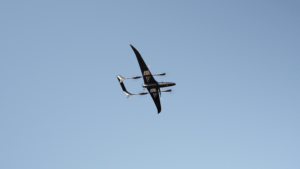 Australia Approves BVLOS Powerline Inspection with Drones
Australia Approves BVLOS Powerline Inspection with Drones
In an advancement for the Australian drone industry, Carbonix has partnered with SA Power Networks to successfully complete a pioneering mission that involved inspecting 150 kilometers of powerlines in remote South Australia using drones flying Beyond Visual Line of Sight (BVLoS). This marks a significant step forward in the commercialization of drone technology in the country, potentially revolutionizing how aerial inspections are conducted across vast utility networks.
The Civil Aviation Safety Authority (CASA) sanctioned the BVLoS operation, setting a precedent for future missions aimed at enhancing the efficiency and safety of inspecting South Australia’s extensive electricity distribution network, which spans over 180,000 square kilometers. The collaboration between Carbonix and SA Power Networks represents 18 months of rigorous work towards integrating long-range UAVs into the routine inspection of remote electricity distribution assets.
Traditionally, powerline inspections have relied on manned aircraft or ground crews, processes that are not only costly but also environmentally detrimental. The introduction of Carbonix drones into this equation is projected to reduce operational costs by up to 80% and CO2 emissions by up to 98%, all while improving safety and operational efficiency. Moreover, drones offer quicker deployment, enhance the cycle of asset inspections, and can significantly improve response times to outages, fault detection, bushfire preparedness, maintenance, and documentation efforts. This transition is particularly beneficial for the 30% of SA Power Networks’ customers residing in regional and remote areas of South Australia, promising a more reliable electricity supply.

The Carbonix Volanti, a first of its kind Australian fixed-wing vertical take-off and landing (VTOL) drone, led the mission, capturing commercially valuable data in a fully automated BVLoS flight. Philip van der Burg, CEO of Carbonix, expressed enthusiasm about the achievement, stating, “This is such an exciting time for the drone industry and for the energy industry. We’ve addressed the risks and barriers, both regulatory and technical, and proven the capability. Long range drone adoption means improved safety, faster response times, and reduced carbon footprint for companies like SA Power Networks. We’re thrilled to have partnered with them to achieve this Australian first.”
Paul Roberts, Head of Corporate Affairs for SA Power Networks, highlighted the company’s focus on innovation to enhance network management and efficiency. “Being able to deploy over the horizon drone patrols will drive greater efficiency in our asset management program and provide genuine safety benefits for our people and community.”
This collaboration not only showcases the potential for UAV technology to transform critical infrastructure maintenance but also solidifies Carbonix and SA Power Networks’ positions as leaders in technological innovation within their respective fields.
Read more:
- Skyports Drone Services, Carbonix Partner to Lower Barriers to Drone Adoption in Energy and Mining
- Australia’s Carbonix Completes First Commercial Flights in US with Volanti Electric Fixed Wing
- Long Range Drone Carbonix Gets Australia’s BARS Certificate

Miriam McNabb is the Editor-in-Chief of DRONELIFE and CEO of JobForDrones, a professional drone services marketplace, and a fascinated observer of the emerging drone industry and the regulatory environment for drones. Miriam has penned over 3,000 articles focused on the commercial drone space and is an international speaker and recognized figure in the industry. Miriam has a degree from the University of Chicago and over 20 years of experience in high tech sales and marketing for new technologies.
For drone industry consulting or writing, Email Miriam.
TWITTER:@spaldingbarker
Subscribe to DroneLife here.







[…] the globe, Australian power distributor SA Power Networks partnered with Carbonix for the first BLVOS power line inspection. The pilot mission covered 150 kilometers of powerlines […]